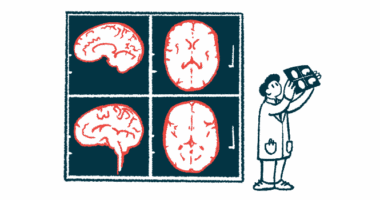Risk factors ID’d for NMOSD relapse with immunosuppressive treatment
Younger age of onset, multiple organ involvement singled out for risk

People who are younger at the onset of neuromyelitis optica spectrum disorder (NMOSD) and those with multiple organ involvement at the first attack by the disease have a higher risk of relapse during treatment with traditional immunosuppressants, a study showed.
A reduction in the levels of antibodies against the AQP4 protein — the most common target of NMOSD-driving antibodies — was associated with a lower relapse risk, however.
These data suggest that for certain patients, “a higher efficacy treatment than immunosuppressants may be necessary to prevent relapse,” the researchers wrote in “Aquaporin-4 Antibody Dynamics and Relapse Risk in Seropositive Neuromyelitis Optica Spectrum Disorder Treated with Immunosuppressants,” which was published in Annals of Neurology.
“These findings may assist neurologists in identifying patients who are likely to experience a relapse during treatment with immunosuppressants, allowing neurologists to initiate therapy in time,” they wrote.
NMOSD is marked by the immune system producing self-reactive antibodies that mistakenly attack cells that support the nervous system. Patients often have periods when symptoms worsen, called relapses, that alternate with times when symptoms ease or go away entirely, or remission.
“Traditional immunosuppressive medications, such as mycophenolate mofetil [sold as CellCept] and azathioprine, are still the cornerstones of NMOSD treatment, widely used because of the convenient route of administration and lower cost,” the researchers wrote, noting, however, that they don’t effectively prevent relapses in 25-60% of patients, which underscores “an urgent need for factors predicting patients’ responses to immunosuppressants.”
The team of researchers in China sought to identify the risk factors of relapse with traditional immunosuppressants in patients positive for anti-AQP4 antibodies. They analyzed data from 400 patients enrolled in the MSNMOBase, a hospital-based electronic database established in 2011 to collect information on people with multiple sclerosis and related disorders such as NMOSD.
NMOSD relapse risk factors
Besides being positive for anti-AQP4 antibodies, included patients were negative for antibodies against the MOG protein, a less common target, and had been on traditional immunosuppressants for at least six months. They also were followed for a minimum of six months and had regular testing for anti-AQP4 antibodies.
Most (91.5%) were women, their median age at the onset of symptoms was 34.8, and they’d had the disease for a median of 1.1 years at enrollment. They were followed for a median of 3.7 years and had minimal disability at the last follow-up, as assessed with the Expanded Disability Status Scale.
At the first attack, 91.8% had only one region involved. Only 34.3% recovered completely, while others had a partial or no recovery.
About one-third of the patients (34.3%) received traditional immunosuppressants at the disease’s onset, while the remaining 65.7% were treated after a relapse. The treatment lasted for a median of 3.9 years, with mycophenolate mofetil being the most common choice (81%), followed by azathioprine (15.5%).
Results showed 128 patients (32%) became negative for anti-AQP4 antibodies. In the whole patient population, the median time to be negative was 76.4 months (about 6.3 years). Among the 272 patients who remained positive for these antibodies, most (64%) showed stable or increased anti-AQP4 antibody levels, while 36% saw a drop in them.
Older age at disease onset, initiating immunosuppressive treatment at onset, and shorter disease duration before maintenance therapy were found to be independent risk factors for becoming negative for anti-AQP4 antibodies.
In the 128 who became negative, the estimated median annualized relapse rate was significantly reduced after becoming negative (0.77 vs. 0.2 relapses a year). Also, those who took significantly longer to become negative were more likely to relapse.
A total of 337 relapses were registered during follow-up, with 173 patients (43.3%) having at least one.
Risk factors for a relapse included younger age at onset (below age 46.4) and the involvement of several organs in the first attack. A decrease in anti-AQP4 antibody levels or becoming negative during treatment was linked to a significantly lower risk.
Among the patients who were younger at the onset of the disease, those with increased or unchanged anti-AQP4 antibody levels were significantly more likely to relapse than those who became negative or decreased (58.7% vs. 40.2%).
In patients who were older at the disease’s onset, a relapse was more frequent in those who began traditional immunosuppressants after one or more relapse than those who began them at the disease’s onset (33.3% vs. 14%).
Patients who were younger at the disease’s onset with multiple organ involvement in the first attack and a steady or increased load of anti-AQP4 antibodies “are most likely to experience relapse under treatment with immunosuppressants,” the researchers wrote. “In addition, our data suggest that the time of … turning negative [for anti-AQP4 antibodies] and the change [in these levels] may be a surrogate efficacy biomarker in clinical trials.”







